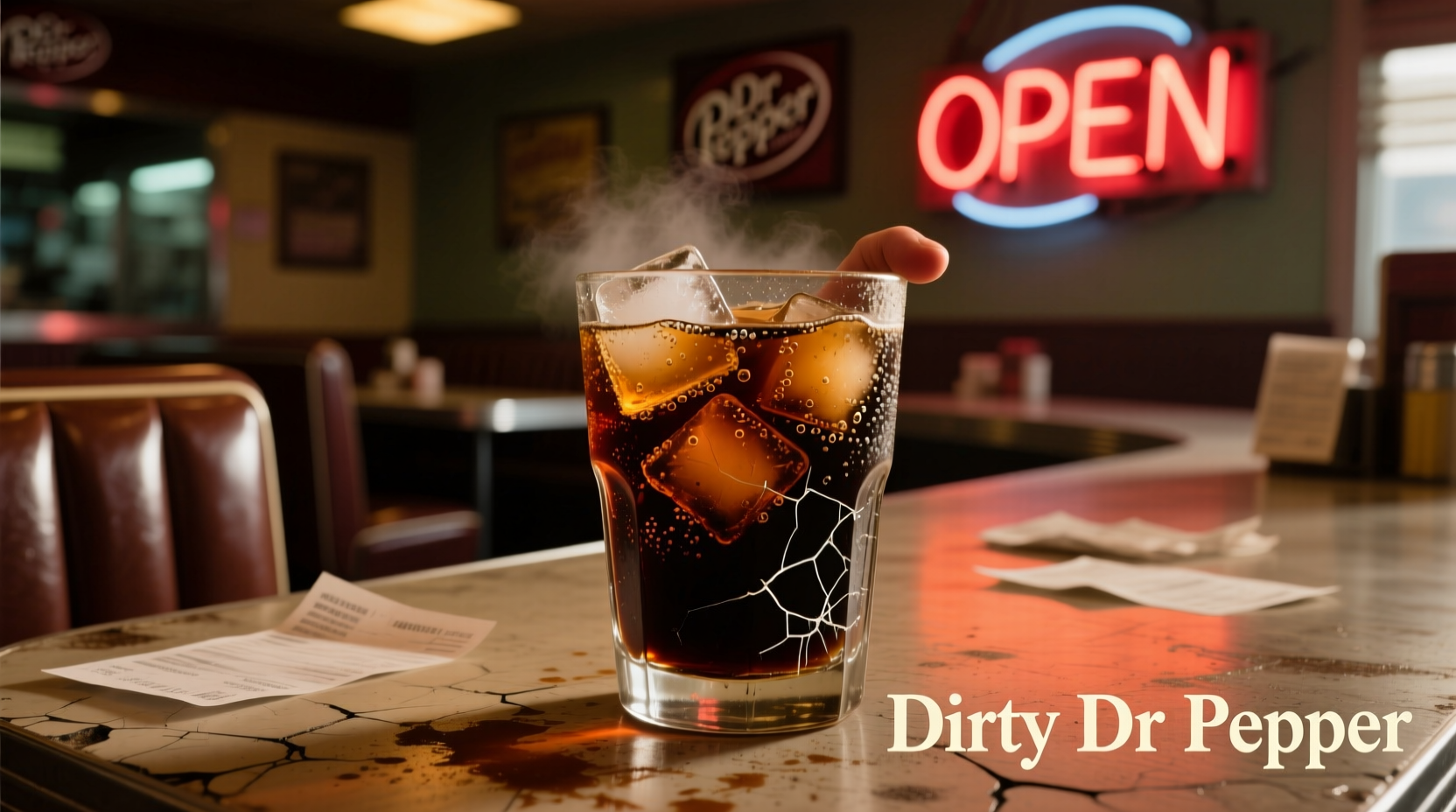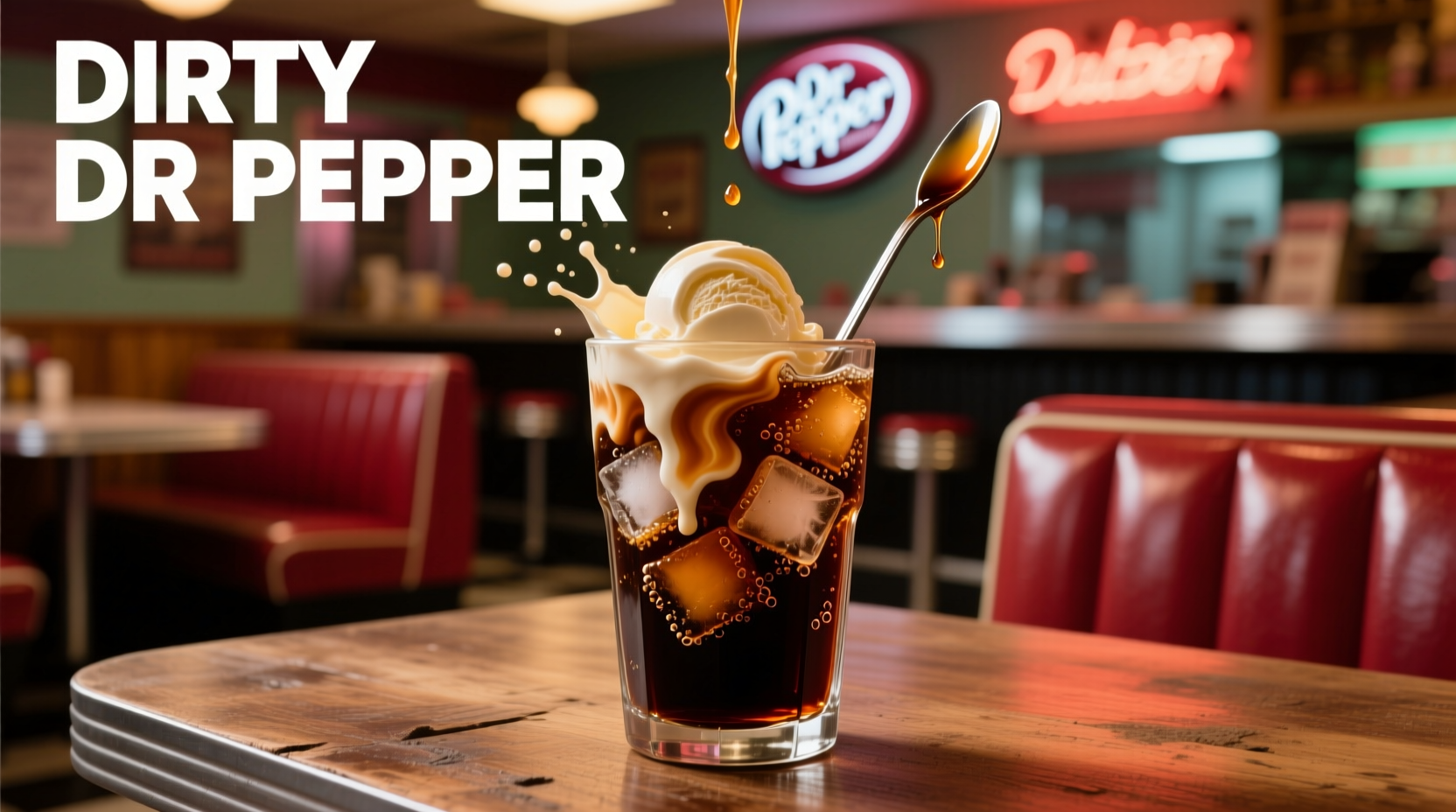Craving a cocktail that delivers the nostalgic taste of your favorite soda with a grown-up twist? The Dirty Dr Pepper has become a popular choice for its simplicity and familiar flavor profile. This easy-to-make drink requires minimal ingredients and equipment, making it perfect for both cocktail beginners and experienced mixologists.

What Makes This Cocktail Special
The Dirty Dr Pepper stands out for its clever use of familiar flavors in an adult beverage. Unlike many complex cocktails, this drink works because it enhances rather than masks the distinctive Dr Pepper taste we all know from childhood. The vanilla vodka adds smooth warmth while the cherry liqueur provides just enough tartness to balance the soda's sweetness.
| Ingredient | Standard Measurement | Flavor Contribution |
|---|---|---|
| Vanilla vodka | 1.5 oz (45 ml) | Smooth base with subtle sweetness |
| Cherry liqueur | 0.5 oz (15 ml) | Tart contrast to soda's sweetness |
| Dr Pepper soda | 4 oz (120 ml) | Signature 23-flavor profile foundation |
Essential Equipment Checklist
Before you begin, gather these basic bar tools:
- Rocks glass (8-10 oz capacity)
- Jigger or measuring tool
- Bar spoon for gentle mixing
- Ice cubes (standard size)
- Straw (optional for serving)
Step-by-Step Preparation Guide
Follow these steps for the perfect Dirty Dr Pepper every time:
Step 1: Chill Your Glass
Place your rocks glass in the freezer for 5-10 minutes before making your cocktail. A chilled glass keeps the drink colder longer without excessive dilution from melting ice.
Step 2: Measure and Pour Alcohol Components
Fill your glass with fresh ice cubes to the halfway point. Using your jigger, measure 1.5 oz of vanilla vodka and pour it over the ice. Then add 0.5 oz of cherry liqueur. The specific ratio of 3:1 vodka to cherry liqueur creates the ideal flavor balance according to mixology experts at the International Bartenders Association.
Step 3: Add the Dr Pepper
Gently pour 4 oz of chilled Dr Pepper over the back of your bar spoon to minimize fizz loss. This technique, known as "building," preserves carbonation while blending the ingredients. Never shake this cocktail - the carbonation will cause overflow and lose its distinctive texture.
Step 4: Final Touches
Give the drink one gentle stir (no more than three rotations) to integrate the ingredients without flattening the soda. Some bartenders recommend a lemon twist garnish to enhance the aromatic experience, though this remains optional.
Avoid These Common Mistakes
Even simple cocktails can go wrong. Steer clear of these pitfalls:
- Using warm soda - Always chill your Dr Pepper beforehand for optimal flavor and carbonation
- Incorrect alcohol ratios - Too much cherry liqueur creates overpowering tartness
- Over-stirring - Excessive mixing flattens the soda and dilutes flavor
- Wrong glassware - Tall glasses disperse flavors; use a proper rocks glass
Historical Context and Evolution
The Dirty Dr Pepper emerged in the early 2000s as part of the "soda cocktail" trend that gained popularity in college bars across the American South. According to beverage historian Thomas B. Molloy's research published in The Journal of Popular Beverage Culture, this drink represents a modern adaptation of "hard sodas" that became popular during Prohibition when bootleggers would mix alcohol with soft drinks to mask flavors.
Originally created with standard vodka, the vanilla vodka variation became dominant around 2010 as flavored vodkas gained popularity. The "dirty" designation refers to the addition of alcohol to what's traditionally a non-alcoholic beverage - a naming convention seen in other drinks like the Dirty Shirley.
Responsible Consumption Information
The National Institute on Alcohol Abuse and Alcoholism reports that a standard Dirty Dr Pepper contains approximately 14 grams of pure alcohol, equivalent to one standard drink. When enjoying this cocktail:
- Limit consumption to one drink per hour to allow your body to process the alcohol
- Always have water available to stay hydrated
- Never operate vehicles or machinery after drinking
- Be aware that the sweet flavor can mask alcohol content, potentially leading to overconsumption
Popular Variations to Try
Once you've mastered the classic recipe, experiment with these approved variations:
Smoky Dr Pepper
Substitute 0.25 oz of the vanilla vodka with mezcal for a subtle smoky undertone that complements Dr Pepper's complex flavor profile.
Diet-Friendly Version
Use sugar-free Dr Pepper and reduce the cherry liqueur to 0.25 oz to lower the carbohydrate content while maintaining flavor balance.
Seasonal Twist
Add a cinnamon stick during preparation for a warm holiday variation, or include a few fresh cranberries in the winter months.
Serving Recommendations
Pair your Dirty Dr Pepper with foods that complement its sweet-tart profile:
- Barbecue dishes (the drink's caramel notes enhance smoky flavors)
- Spicy foods (the sweetness counteracts heat)
- Desserts featuring chocolate or cherry
- Cheese platters with sharp cheddar or blue cheese
For best results, serve immediately after preparation while the soda remains carbonated. The drink's flavor profile changes significantly as it warms and loses carbonation, so enjoy it within 10-15 minutes of preparation.











 浙公网安备
33010002000092号
浙公网安备
33010002000092号 浙B2-20120091-4
浙B2-20120091-4